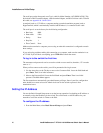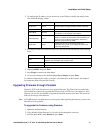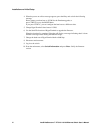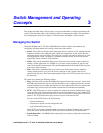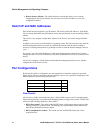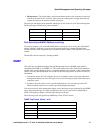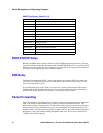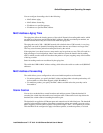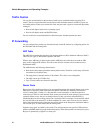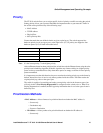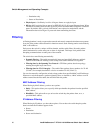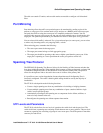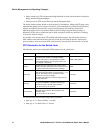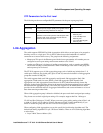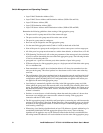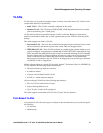28 Intel® NetStructure™ ZT 8101 10/100 Ethernet Switch User’s Manual
Switch Management and Operating Concepts
Traffic Control
You can also set thresholds for the amount of traffic a port can handle before triggering flow
control. The flow control threshold sets the limit for the maximum amount of memory a port can
use to hold packets. When a port reaches this limit, the port sends a signal to slow down the packets
coming in:
• Ports in half-duplex mode assert a jamming signal.
• Ports in full-duplex mode send PAUSE frames.
You can set the flow control thresholds for individual ports and then monitor the status.
IP Forwarding
You can configure how packets are forwarded, based on their IP address, by configuring entries for
the ARP table and the routing table.
ARP Table
The ARP table maintains the mappings from Internet addresses (IP) to hardware addresses (MAC).
There are two types of ARP entries: dynamic and static.
When a static ARP entry is added to the switch's ARP table, the switch does not send an ARP
query to the configured IP address. This allows the switch to connect to devices that have not
implemented ARP.
The ARP table has the following characteristics:
• Static entries have higher precedence than dynamic entries. Therefore, a static entry will not be
overwritten by a dynamic entry.
• The aging time for dynamic entries is 20 minutes. This value is not configurable.
• The table can be up to 2 KB in size.
• Up to 32 static entries are allowed in the table.
Router Ports
Router ports allow multicast packets to be propagated throughout the network. Router ports can be
either static or dynamic. Static router ports are special routes that you manually enter into the
switch’s routing table. Usually it is a port that has a router attached to it, and the router has a
connection to a WAN or to the Internet. Static router ports should be used sparingly, because when
a network failure occurs, they do not change. However, they can reduce network traffic by
eliminating the need for a routing protocol on a local network. For example, a local network, which
has only one link to the network, is an ideal candidate for a static route. You can also use them to
restrict the transmission path a datagram must follow, based on the datagram's destination address.
You can add up to 32 static entries into the routing table.
Dynamic router ports are added by the switch. The switch monitors each port for UDP multicast
packets and IGMP multicast group membership reports. When these packets are detected on a port,
that port is dynamically assigned as a router port.



